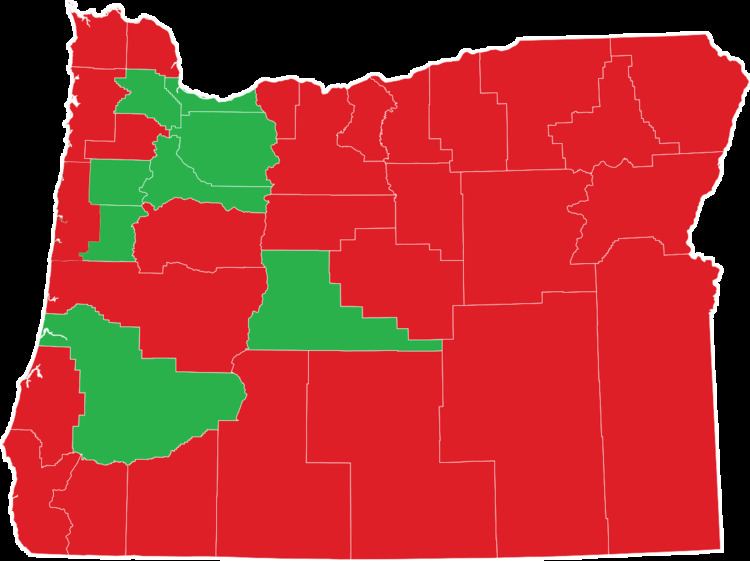Yes 489,592 Valid votes 978,634 | No 489,042 | |
 | ||
489,592 7001500300000000000♠50.03% 489,042 7001499700000000000♠49.97% 978,634 7001836100000000000♠83.61% | ||
Ballot Measure 53 was a legislatively referred constitutional amendment ballot measure for the May 20, 2008 primary election ballot in the state of Oregon. The measure amended the Oregon Constitution and was narrowly passed by the voters after an automatically triggered recount was taken.
Contents
Background
In November 2000 voters amended the Oregon Constitution by approving the ballot Measure 3, the Oregon Property Protection Act of 2000. The amendment imposed several restrictions on the ability of state and local governments to civilly forfeit property. This measure modified some of the restrictions on civil forfeiture of property.
At the time this measure was put forward, Oregon's constitution required that a person's property may be forfeited only if the person is convicted of a crime. In addition, the forfeiting agency must show by clear and convincing evidence that the property was an instrumentality of that crime, or proceeds of that crime.
This measure would allow civil forfeiture of instrumentalities and proceeds of other crimes that are similar to the crime that a person is convicted of committing, even though the person is not convicted of committing those other crimes. The measure required notice to the person and opportunity to challenge the seizure and forfeiture.
This measure also specified circumstances in which property may be forfeited without a criminal conviction. The measure would allow forfeiture if the person took the property with intent to defeat forfeiture, the person knew or should have known that the property constituted proceeds or instrumentality of criminal conduct, or the person acquiesced in the criminal conduct.
It also modified the standard of proof in civil forfeiture proceedings, requiring proof by preponderance of evidence to forfeit personal property, and proof by clear and convincing evidence to forfeit real property. The measure made an exception for cash, weapons or negotiable instruments found in close proximity to controlled substances or instrumentalities of criminal conduct, providing that claimant must prove by preponderance of evidence that the property is not subject to forfeiture.
The measure removed the prohibition on using forfeited property for law enforcement purposes, and removes the cap on the amount of property that may be applied against the costs of the forfeiture proceeding.
This measure made it so that forfeiture of animals were not subject to the Oregon Property Protection Act of 2000 and made various other housekeeping amendments to the act.
Estimate of Financial Impact
The direct financial impact of the measure to state and local governments was indeterminate due to the inability to accurately predict the number of civil forfeitures that may occur. If the frequency of civil forfeitures increases, then the amount of money going to the state and local jurisdictions would increase correspondingly. Any assets forfeited under the measure were distributed as follows: to the satisfaction of any foreclosed liens, security interests and contracts in the order of their priority; to the state or any of its political subdivisions for actual and reasonable expenses; and to the state or any of its political subdivisions for drug treatment programs. The measure would increase the revenue to the state and its political subdivisions, but the extent of the increase was unknown.
